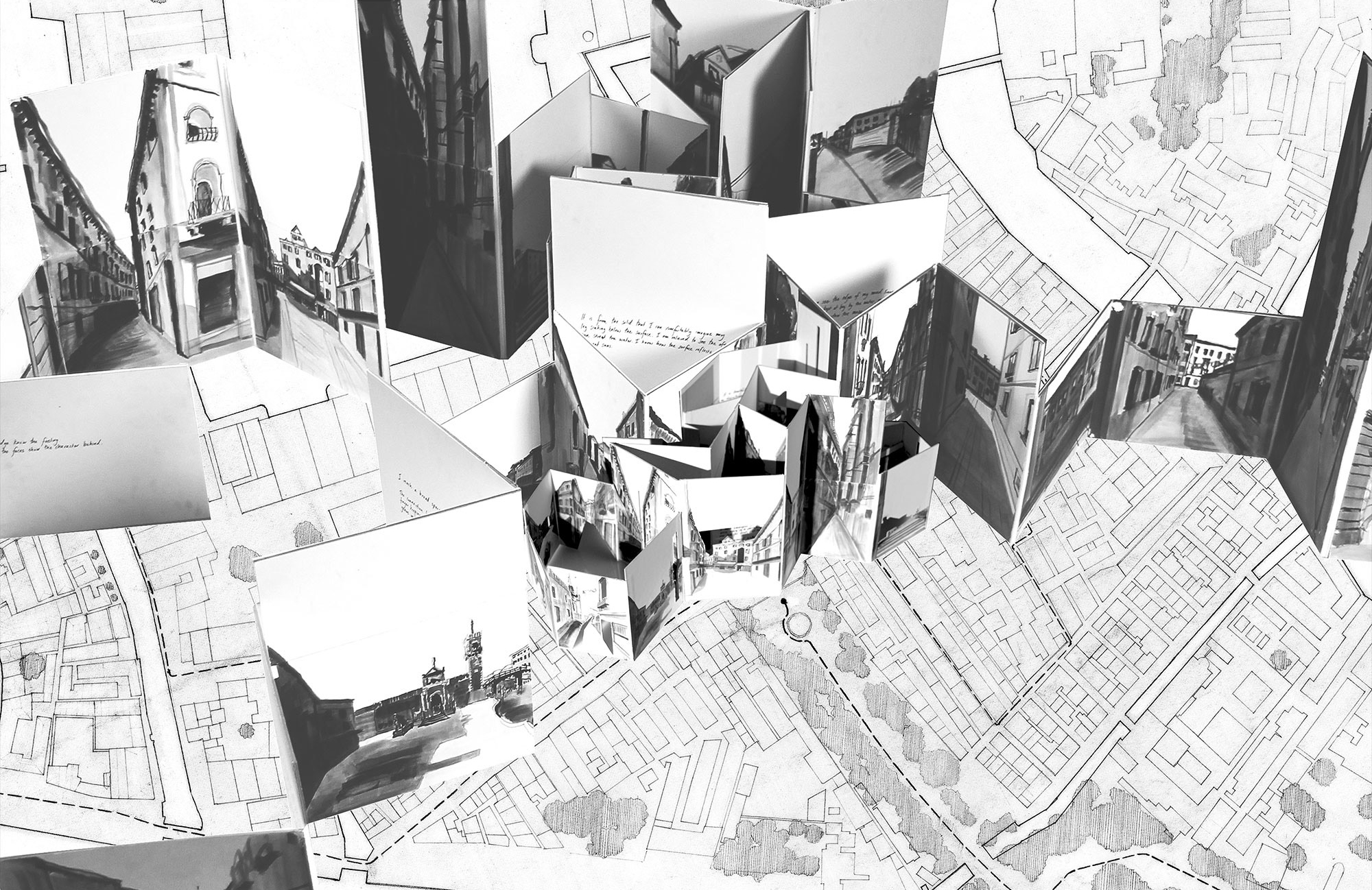A Model of Paintings
Cornell University Thesis (2015)
Venice, Italy

Collage of Site Plan and Perspective Paintings
Proposal: to produce a new sequence of space inspired by the site documentation
Thesis Advisors
Vince Mulcahy
Jim Williamson
This series of models translates the routes documented in Walking Venice into the architectural basis for Library in the Labyrinth. In the process, the models stand in their own right as surreal juxtapositions of text and image and grapple with the dichotomy of illusionistic and physical space.
Inspired by the writing of Jorge Luis Borges, spatial and temporal distinctions between different regions and characters are collapsed to produce parallel readings of the present. The narratives are then abstracted with several purely formal study models.



A Model of Paintings
The Three Leporellos are intertwined. Before, they were linear sequences of space. Now, they confront each other and create interstitial space. Two-point perspectives wrap around to create panoramas. Streets intersect each other in new ways; piazzas are created. Cast shadows from the folded planes create new readings of the space implied by the paintings.
The Three Intertwined Leporellos are scaled down and apertures are cut through them to create A Model of Paintings. The illusionistic depth implied by the ink paintings are now interrupted by openings to real, physical depth. Surreal encounters are created between text and painting; both take on new meaning. Strong directional light animates it all.








 By folding planes, cutting aperatures, and casting light, surreal encounters are created with the original text and images.
By folding planes, cutting aperatures, and casting light, surreal encounters are created with the original text and images. In Walking Venice, Real three-dimensional space was translated into two-dimensional ink paintings. Here, the two-dimensional ink paintings were folded, cut, and wrapped to recreate three-dimensional space. The intent of these transformations was to distill the original experiential encounter to its essence and rebuild it as a new sequence of space rooted in the original. However, A Model of Paintings still maintains a dichotomy between illusionistic space implied by the paintings and physical space between them. While it is part of what makes A Model of Paintings enticing, the dichotomy needs to be flattened and remolded to translate into clean, physical space. Architecture, in the end, is not illusionistic like painting and drawing. The following series of transformations is employed to reconcile this.
The Drawbridge Man






The Mask Repairman






The Accountant






Each of the Three Lerporellos is extracted from A Model of Paintings.
1.The folded planes are traced as they stand with the illusionistic depth implied by each painting.
2.The planes are extruded to become interesecting volumes.
3.The volumes are flipped upside down to become worm’s eye axonometrics.
4.The worm’s eye axonometric volumes are carved to recreate the view implied by each original painting.
5.Step 1 above is recreated as a physical model.
6.Step 4 above is recreated as a physical model.
7.The physical models created in Step 6 are intertwined to create A Collection of Carved Volumes.

A Collection of Carved Volumes
Rather than a direct translation of the architecture of the site, this series of transformations has distilled out specific details while maintaining the character of the place and its movement. Through changing dimensionality and medium, combining and extracting, and literal reinterpretation each step of the way, the original sequences of space have been remolded to create something new, rooted in place. A Collection of Carved Volumes becomes the basis for an architectural form.
Keep Reading:

